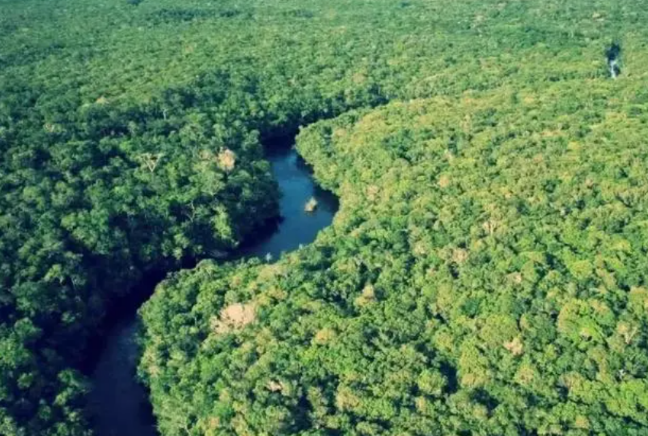Scientists have found that South America is sinking. What would happen if South America disappeared altogether?
More than 200 million years ago, South America and Africa split and became separate landmasses, but now their behavior is so weird that some scientists have discovered that they are actually sinking. What's going on? What impact would that have on the rest of the world?
We know that the Earth's crust is made up of moving plates, divided into land or ocean plates, formed in the hot magma of the mantle. There are about 15 to 20 of them, and they fit together like a puzzle board, where only the pieces of the puzzle accidentally bump into each other as they move.
The South American plate is the smallest, moving at a rate of about three centimeters. Such a speed may seem insignificant, but it would lead to plate collisions between the South American and Nazca plates, and these slow collisions could lead to earthquakes such as the magnitude 9.5 earthquake that struck Chile in 1960. Today, when continental plates like South America collide WITH THE NAZCA PLATE, one of them starts to be swallowed up by the other plates, causing nearly half a billion people to emerge from the sinking land. The two plates are known as "subduction," advancing at a rate of 8-10 centimeters per year 39bet-kết quả bóng đá-kết quả xổ số miền bắc-kèo bóng đá -soi cầu bóng đá-đặt cược.
 Normally, subsidence occurs when two plates collide. However, if the rolling is in the opposite direction, then mixing will occur. The Nazca plate will be attracted to the South American plate as it sinks. You can see a new trench, and it should be about as deep as the Mariana Trench. But in fact, the opposite is true. These plates get stuck, creating enormous pressure on the fault zone between the two plates. Under too much pressure, the plates break up on their own, releasing all that energy into seismic waves.
Normally, subsidence occurs when two plates collide. However, if the rolling is in the opposite direction, then mixing will occur. The Nazca plate will be attracted to the South American plate as it sinks. You can see a new trench, and it should be about as deep as the Mariana Trench. But in fact, the opposite is true. These plates get stuck, creating enormous pressure on the fault zone between the two plates. Under too much pressure, the plates break up on their own, releasing all that energy into seismic waves.
So when that happens, we have to be ready for volcanoes, earthquakes, tsunamis. The region is within the Andean Ring of Fire and is known for its major volcanic activity. It's caused by the Nazca plate, which has sunk into South America. Imagine, if all the volcanoes started at the same time, countries like Colombia, Chile, Peru, could be devastated, and many people would be uprooted by such a disaster. But if we do, we will lose UNESCO World Heritage sites like Machu Picchu, or the impossibly beautiful city of Cartagena, and worse, the Amazon rainforest.
The Amazon rainforest is known as the lung of the Earth, supporting 10 percent of the planet's plants and animals. The loss of the Amazon rainforest would lead to mass extinctions of species and would have a profound impact on other ecosystems around the globe. When the Amazon forest is gone, there will be less forest to provide us with oxygen. You're seeing a huge impact on markets and supply chains around the world.
Argentina and Brazil produce more than half of the world's soybeans, and if they can't continue to rely on South America, there will be a global food shortage. After all, Brazil and Colombia are 25 percent of the world's coffee exporters. According to preliminary statistics, the population of this state is 438 million. No country or continent in the world can take them in at the same time. Of course, after all, there has not been a real disaster in South America. Perhaps all volcanoes could erupt at once, which would have helped us avoid it, but that's another story.
